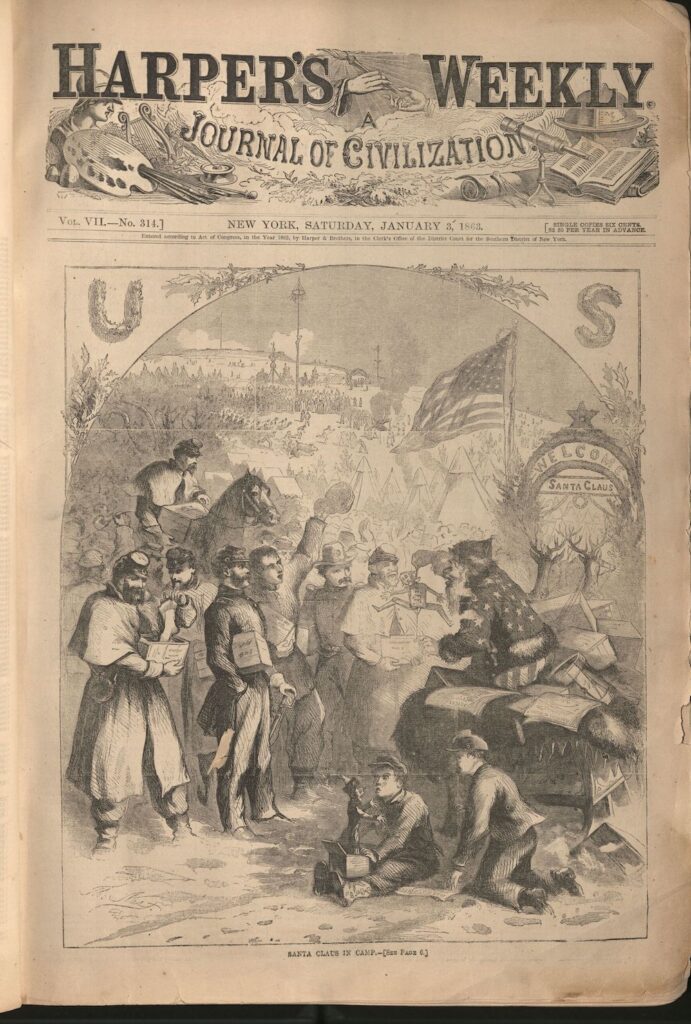Santa Claus. Acknowledged in religious and secular seasonal celebrations, jolly ol’ Nick is a legendary pop culture icon. Every year, modern depictions show a jolly man with a long white beard, riding through the night sky on a sleigh from his home in the North Pole to magically deliver goodies across the globe.
Did you know that this modern version of Santa was “invented” by a cartoonist? Thomas Nast, a German immigrant, moved to New York when he was six years old. He started working on cartoons when he was just 16 years old, and at 18, his work first appeared in Harper’s Weekly. Nast would go on to have a rich career in cartooning and is considered the “Father of the American Cartoon.”
Nast reportedly created the modern version of Santa using inspiration from both the German Sankt Nikolaus and Weihnachtsmann (Christmas Man), and also drawing on the roots of the pagan holiday, Yule. His illustrations of Santa first appeared in Harper’s Weekly on January 3, 1863 in the midst of the Civil War. Fun fact: The Yule festival was also connected to Odin’s “Wild Hunt” that involved Odin flying through the sky at night on his magical flying horse named Sleipnir. Did the hairy growth on the Norse All-Father’s chin inspire Nast? By Odin’s Beard, it just may have!

Nast’s version of Santa rides a sleigh pulled by reindeer and shares gifts with children. Harper’s Weekly on January 3, 1863.

Experts are not entirely sure, but the story that Santa Claus lives at the North Pole may also have been a Thomas Nast creation. In his December 29, 1866 illustration in Harper’s Weekly, a collage of engravings titled Santa Claus and His Works, includes the caption “Santa Claussville, N.P.” as in North Pole.
